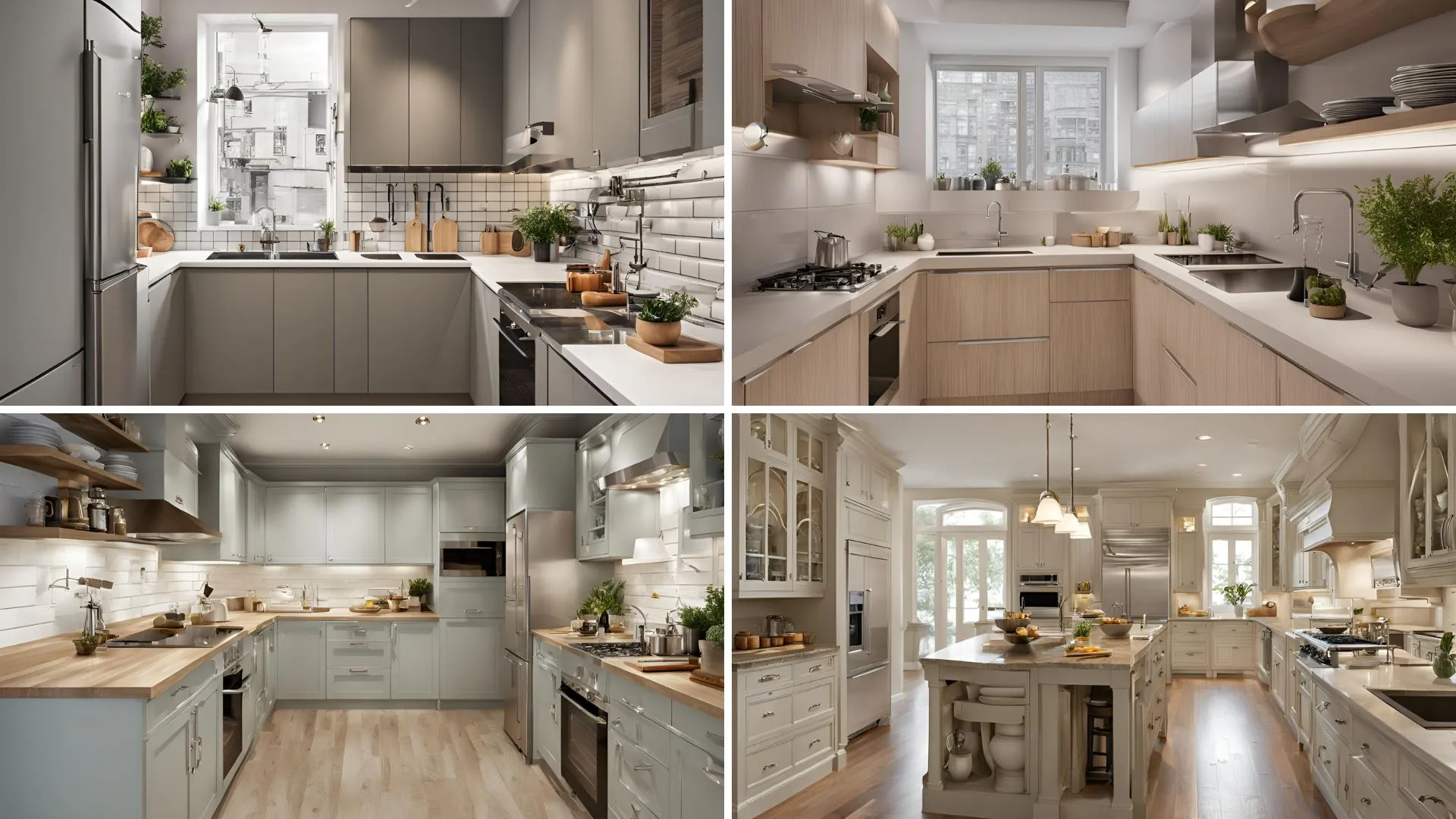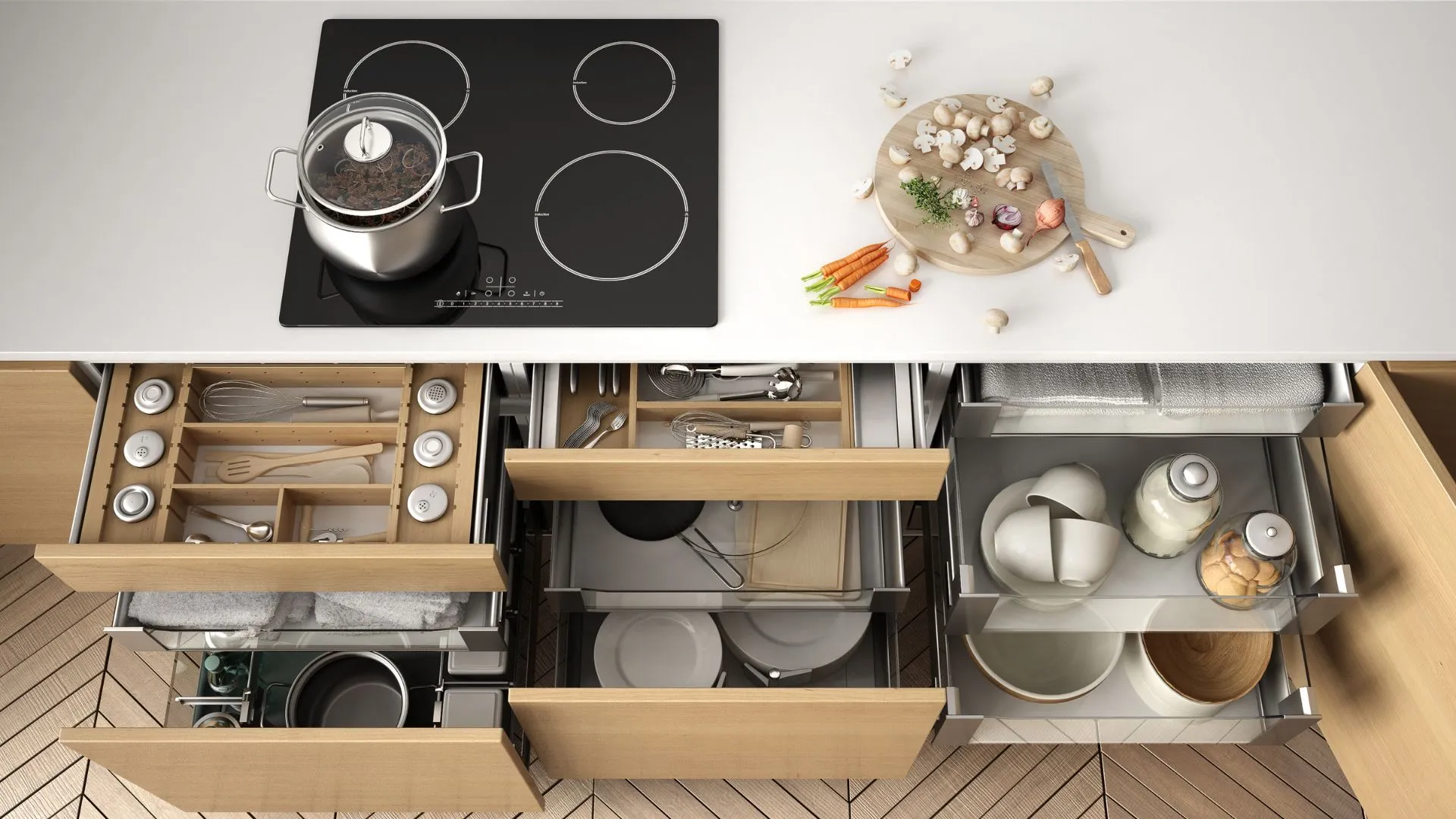Designing a modular kitchen can be an exciting yet daunting task. A modular kitchen is a modern and efficient approach to kitchen design, providing functionality and aesthetic appeal through its customizable and space-saving modules. Whether you’re renovating your current kitchen or building a new one, understanding the key considerations before diving into the design process is crucial. In this blog post, we’ll explore the essential things to know before designing a modular kitchen, ensuring you achieve a space that’s both beautiful and highly functional.
Introduction
A modular kitchen offers a blend of style, convenience, and functionality that traditional kitchens often lack. With modular kitchens becoming increasingly popular, homeowners are drawn to their sleek designs, efficient use of space, and the ability to customize based on individual needs and preferences. However, designing a modular kitchen requires careful planning and consideration. In this guide, we’ll walk you through the must-know aspects of modular kitchen design, helping you create a kitchen that perfectly fits your lifestyle.
Understand Your Kitchen Layout

Before diving into the specifics of a modular kitchen, it’s essential to understand the layout that will work best for your space. The layout forms the foundation of your kitchen design and influences everything from functionality to aesthetics. Common kitchen layouts include:
- L-Shaped Kitchen: Ideal for small to medium-sized kitchens, offering efficient corner space utilization and ample counter space.
- U-Shaped Kitchen: Perfect for larger spaces, providing maximum storage and counter space along three walls.
- Galley Kitchen: Suitable for narrow spaces, with two parallel walls featuring cabinets and appliances.
- Island Kitchen: Adds an island to any layout, offering additional workspace and a focal point for social interactions.
Each layout has its advantages and drawbacks, so it’s important to choose one that aligns with your kitchen’s dimensions and your cooking habits. Consulting with a kitchen designer can provide valuable insights into which layout will best suit your needs.
Prioritize Storage Solutions

One of the primary benefits of a modular kitchen is the enhanced storage options it offers. Effective storage solutions are crucial for maintaining an organized and clutter-free kitchen. Consider the following storage elements when designing your modular kitchen:
- Cabinets: Opt for cabinets that maximize space utilization. Overhead cabinets are great for storing less frequently used items, while base cabinets can house everyday essentials.
- Drawers: Incorporate deep drawers for pots and pans, and shallow drawers for cutlery and utensils. Soft-closing mechanisms can add a touch of luxury and prevent wear and tear.
- Pull-Out Shelves: These are ideal for storing spices, condiments, and other small items, providing easy access and visibility.
- Corner Units: Utilize corner spaces with carousel units or pull-out racks to avoid dead space.
By focusing on smart storage solutions, you can ensure that your modular kitchen remains functional and organized, making daily cooking tasks more efficient.
Choose the Right Materials
The materials you choose for your modular kitchen significantly impact its durability, maintenance, and aesthetic appeal. Different materials offer varying levels of resistance to heat, moisture, and wear. Here are some popular choices:
- Cabinet Materials: Options include plywood, MDF (Medium-Density Fiberboard), and particleboard. Plywood is highly durable and moisture-resistant, making it an excellent choice for kitchens.
- Countertops: Granite, quartz, and solid surface materials are popular for their durability and ease of maintenance. Each material has its unique look and feel, so consider what best fits your style and usage.
- Backsplashes: Ceramic tiles, glass, and stainless steel are common choices. They not only protect your walls from splashes but also add a decorative element to your kitchen.
Selecting high-quality materials ensures your modular kitchen withstands the test of time and retains its beauty and functionality.
Focus on Functionality and Ergonomics
While aesthetics are important, the functionality and ergonomics of your modular kitchen are paramount. A well-designed kitchen should make cooking and cleaning tasks easier and more enjoyable. Consider the following tips:
- Work Triangle: The classic kitchen work triangle involves the sink, stove, and refrigerator. Position these elements within easy reach to enhance efficiency.
- Lighting: Good lighting is crucial in a kitchen. Incorporate task lighting under cabinets and ambient lighting to create a warm, inviting atmosphere.
- Ventilation: Proper ventilation is essential to keep your kitchen fresh and odor-free. Invest in a good-quality chimney or exhaust fan.
- Ergonomic Design: Ensure countertops are at a comfortable height, and cabinets and shelves are easily accessible to avoid strain during cooking.
By prioritizing functionality and ergonomics, you can create a kitchen that’s not only beautiful but also a pleasure to use daily.
Conclusion
Designing a modular kitchen involves careful consideration of layout, storage solutions, materials, and functionality. By understanding these key aspects, you can create a kitchen that is both stylish and highly practical. Remember, a well-designed modular kitchen not only enhances your cooking experience but also adds value to your home.
We hope this guide has provided you with valuable insights into the must-know things before designing a modular kitchen. If you have any questions or would like to share your own tips and experiences, please leave a comment below. We’d love to hear from you!